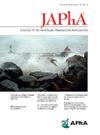Assessing the accessibility and accuracy of pharmacist counseling for continuous glucose monitoring: A secret shopper study of community pharmacies
IF 2.5
4区 医学
Q3 PHARMACOLOGY & PHARMACY
Journal of the American Pharmacists Association
Pub Date : 2025-08-05
DOI:10.1016/j.japh.2025.102493
引用次数: 0
Abstract
Background
Continuous glucose monitors (CGMs) have many benefits in diabetes care and have grown in popularity. CGMs are often dispensed in community pharmacies, placing a growing responsibility on community pharmacists to provide patient education. Limited time and resources may result in suboptimal, or even absent, patient counseling.
Objectives
To assess the accessibility and accuracy of CGM counseling offered by community pharmacists in Austin, TX.
Methods
All community pharmacies in Austin, TX (N = 125) were visited in person in 2 phases by trained auditors, simulating a patient requesting pharmacist counseling on a CGM device. The devices for counseling were Freestyle Libre 3 (Abbott Diabetes Care) in phase one and Dexcom G7 (Dexcom, Inc.) in phase 2. Competency outcomes measured included glycemic targets, description of components, placement technique, checking/assessing glucose, and other tips for successful use. All responses were recorded immediately following the encounter using an 8-item online form.
Results
Data were obtained from 114 (91.2%) community pharmacies in both phases. Counseling was provided more often for Freestyle Libre versus Dexcom (88.6% vs. 71.1%, P < 0.01). A small proportion declined to counsel due to lack of time, limited product comfort, or a combination of the 2. Competency outcomes frequently met for Freestyle Libre and Dexcom included: sensor placement (91.5% vs. 88.7%), CGM components (80.3% vs. 70.4%), and application technique (78.9% vs. 56.3%, P < 0.01). Competency outcomes rarely met included glycemic targets (1.4% vs. 0.0%), alarms and alerts (1.4% vs. 2.8%), when a fingerstick is needed (0.0% vs. 7.0%), and how to interpret glucose/arrows (18.3% vs. 12.7%).
Conclusion
Pharmacists remain accessible health care providers for individuals with diabetes, but deficits in CGM counseling and patient education in community pharmacies exist. Barriers may include low pharmacist comfort with CGM devices and potential lack of familiarity based on the type of device a patient is using.
评估持续血糖监测药剂师咨询的可及性和准确性:社区药房的秘密购物者研究。
背景:连续血糖监测仪(cgm)在糖尿病护理中有许多好处,并且越来越受欢迎。中药通常在社区药房配药,这使得社区药剂师越来越有责任为患者提供教育。有限的时间和资源可能导致患者咨询不理想,甚至缺席。目的:评估德克萨斯州奥斯汀市社区药剂师提供的CGM咨询的可及性和准确性。方法:由训练有素的审核员分两个阶段亲自访问德克萨斯州奥斯汀市所有社区药房(N=125),模拟患者要求药剂师对CGM设备进行咨询。用于咨询的设备是第一阶段的Freestyle Libre 3(雅培糖尿病护理)和第二阶段的Dexcom G7 (Dexcom, Inc.)。测试的能力结果包括血糖目标、成分描述、放置技术、检查/评估葡萄糖以及其他成功使用的技巧。所有的回答都是在遇到问题后立即用一个包含八个项目的在线表格记录下来的。结果:两期共获得114家(91.2%)社区药房的数据。与Dexcom相比,Freestyle Libre提供咨询的频率更高(88.6%比71.1%)。结论:药剂师仍然是糖尿病患者可获得的医疗服务提供者,但社区药房在CGM咨询和患者教育方面存在不足。障碍可能包括药剂师对CGM器械的舒适度较低,以及基于患者正在使用的器械类型可能缺乏熟悉。
本文章由计算机程序翻译,如有差异,请以英文原文为准。
求助全文
约1分钟内获得全文
求助全文
来源期刊
CiteScore
3.30
自引率
14.30%
发文量
336
审稿时长
46 days
期刊介绍:
The Journal of the American Pharmacists Association is the official peer-reviewed journal of the American Pharmacists Association (APhA), providing information on pharmaceutical care, drug therapy, diseases and other health issues, trends in pharmacy practice and therapeutics, informed opinion, and original research. JAPhA publishes original research, reviews, experiences, and opinion articles that link science to contemporary pharmacy practice to improve patient care.

 求助内容:
求助内容: 应助结果提醒方式:
应助结果提醒方式:


